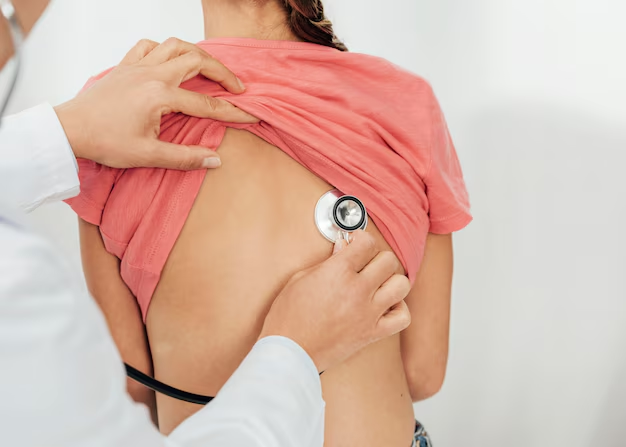Recognizing Breast Cancer Symptoms: What You Need to Know
Breast cancer is a concern that touches the lives of millions. Being attuned to the symptoms of breast cancer can be crucial for early detection and treatment. Let's explore the signs that should catch your attention.
Understanding Breast Cancer Symptoms
Breast cancer symptoms can vary from person to person. It is vital to understand that not all changes in your breast point towards cancer. However, awareness of these signs and seeking timely medical consultation can make a significant difference.
Common Symptoms
Lump or Mass: One of the most recognizable symptoms is a new lump or mass in the breast. While not all masses are cancerous, those that are painless, hard, and have irregular edges are more concerning.
Swelling: Swelling of all or part of a breast, even if no distinct lump is felt, can be another indication.
Skin Changes: Any irritation or dimpling of the breast skin (sometimes resembling an orange peel) should be noted.
Nipple Changes: Inversions or changes in the nipple position or shape can be significant.
Nipple Discharge: Discharge from the nipple, particularly if it is bloody or occurs without squeezing, is a symptom to be aware of.
Pain: Although breast cancer lumps typically aren’t painful, any persistent pain in a specific location should be investigated.
Redness or Flakiness: Red, flaky skin in the nipple area or on the breast may also be a symptom.
Less Common Symptoms
Lymph Node Changes: Sometimes, breast cancer can spread to lymph nodes, causing them to feel swollen under the arm or around the collarbone before a lump in the breast is large enough to be felt.
Breast Shape Changes: Any change in the size or shape of the breast, especially when accompanied by the other symptoms, should be assessed by a healthcare provider.
Unexplained Breast Asymmetry: While natural asymmetry between breasts is common, any new or unusual changes in size should be evaluated.
Delving Deeper into Symptom Recognition
Breast cancer is not a one-size-fits-all when it comes to symptoms. Context matters. Age, changes in the body over time, and personal health history all play a role in symptom interpretation.
The Role of Self-Exams
Self-exams serve as a useful tool in recognizing what is normal for your body. They should not replace regular screenings but can add an extra layer of vigilance. Regularly checking for lumps, changes, or other abnormalities can help with early detection.
How to Conduct a Proper Self-Exam
Visual Inspection: Stand in front of a mirror with shoulders straight and arms on your hips. Look for any changes in the usual shape, size, or appearance.
Physical Examination: Use the pads of your fingers to feel your breasts. Move in a circular or up-and-down pattern, ensuring the entire area, including the upper chest and armpits, is examined.
Consistency is Key: Conduct self-exams around the same time each month, preferably a few days after your menstrual cycle ends.
Medical Screenings and Their Importance
While being aware of symptoms is essential, proactive screenings are crucial. Mammograms, ultrasound, and MRI are some tools that help detect breast cancer early, often before physical symptoms manifest.
Types of Screenings
Mammogram: An X-ray of the breast is a key tool for early detection.
Ultrasound: Often used to further investigate abnormalities found in a mammogram.
MRI: Recommended for those at high risk due to family history or genetic factors.
Decoding Test Results
Awaiting test results can be a stressful experience. Understanding that abnormal findings do not always signify cancer is important. Many conditions can mimic breast cancer symptoms.
Risk Factors and Prevention
Understanding risk factors can provide insight into the likelihood of developing breast cancer.
Key Risk Factors
- Age: The risk increases as you get older.
- Family History: A family history of breast or ovarian cancer increases the risk.
- Genetic Mutations: BRCA1 and BRCA2 genes significantly raise the risk.
- Reproductive History: Early menstruation and late menopause can increase risk.
- Lifestyle: Sedentary lifestyle, alcohol consumption, and obesity are influential.
Preventative Actions
Healthy Lifestyle Choices: Maintaining a healthy weight, regular exercise, and a balanced diet can lower risk.
Limit Alcohol: Reducing alcohol intake can reduce breast cancer risk.
Regular Screenings: This is particularly vital for those with a family history.
Genetic Counseling: For those with a strong family history, genetic counseling can provide guidance.
Empowering Through Education
Being informed arms you with the knowledge needed to take proactive steps. Recognizing symptoms, understanding risk factors, and committing to regular screenings establish a strong defense against breast cancer.
Key Takeaways and Tips 📝
- Early Detection is Key: Regular self-exams and screenings can lead to early diagnosis, significantly improving treatment outcomes.
- Know Your Body: Be familiar with how your breasts normally look and feel.
- Consult Professionals: If you detect any unusual changes, contact a healthcare provider for further evaluation.
- Adopt a Healthy Lifestyle: Regular exercise, a balanced diet, and limited alcohol intake can lower your risk.
- Understand Risk Factors: Awareness of personal and family history can guide more personalized proactive measures.
By staying vigilant and educated, you are taking a significant step in safeguarding your health and well-being.

Related Articles
- Are Breast Cancer Lumps Painful
- Are Chills a Sign Of Cancer
- Are Colon Spasms a Sign Of Cancer
- Are Lytic Lesions Always Cancer
- Are Polyps Cancer
- Can a Blood Test Detect Cancer
- Can a Ct Scan Detect Cancer
- Can a Dexa Scan Show Cancer
- Can a Gastric Emptying Scan Show Cancer
- Can a Lung Biopsy Cause Cancer To Spread